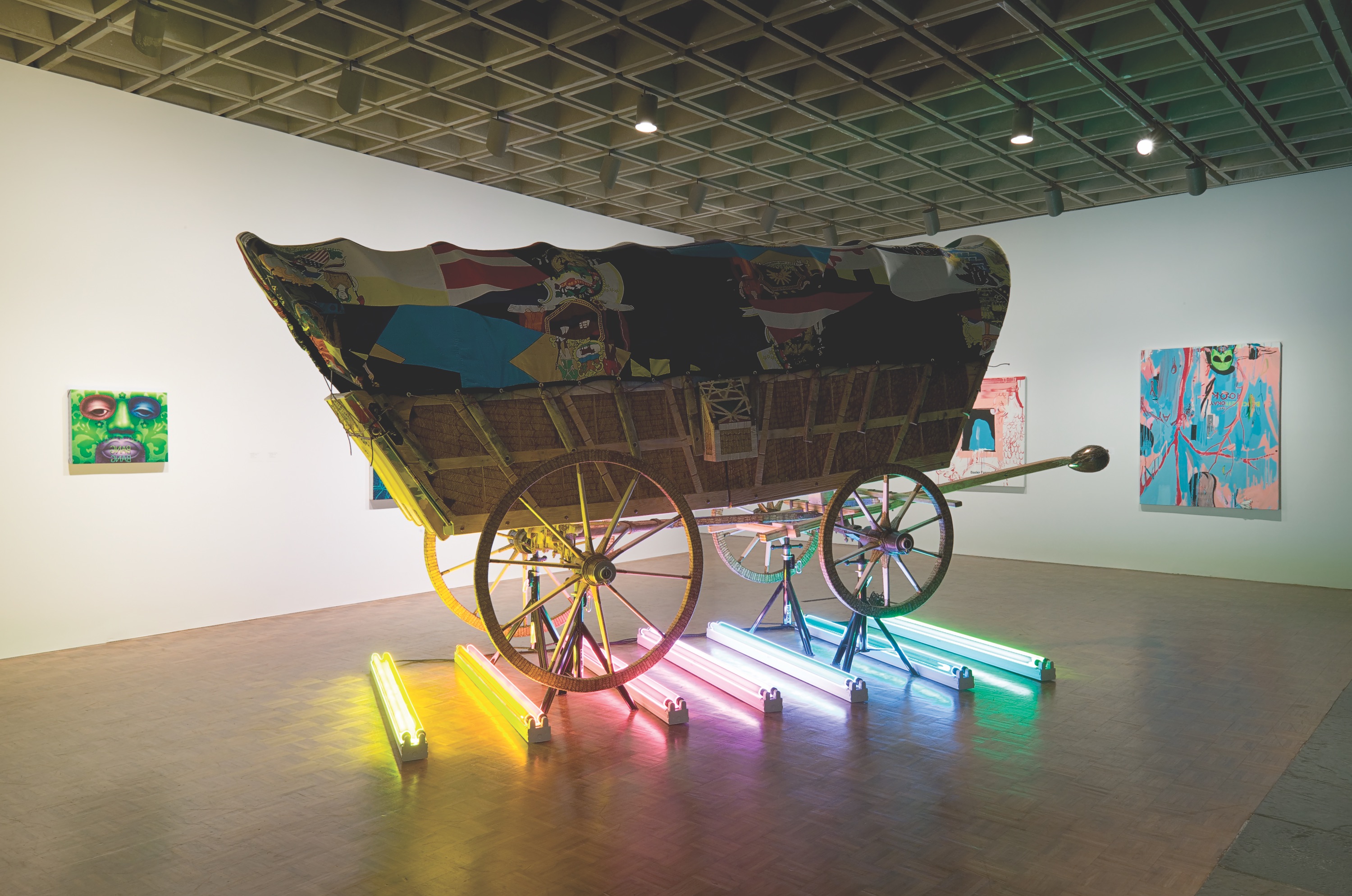
The first Whitney Biennial was held in 1973 (though it existed in a different format since 1932), and the artists who appeared in the inaugural exhibition, like Dorothea Rockburne, remember the show by its first name, the Whitney Annual. “I remember when the Whitney was on 8th street and Willem de Kooning and Franz Kline were showing in the Annual,” Rockburne says. “When they changed it to every two years, it seemed more reasonable. A small institution doesn’t have the money or staff to handle that kind of show every year.”
Outnumbered by male counterparts—such as Alex Katz, Brice Marden and Ron Gorchov—Rockburne was joined by feminist trailblazers like Lynda Benglis, who felt the inaugural Biennial was a first step towards even gender footing. “I can say that the context of the Whitney especially at the beginning of the women's’ movement was hugely important,” Benglis says. “It was a resource for contemporary thinking and a platform for representation.”
For the second iteration, the curators chose to showcase artists who hadn’t shown at the museum for more than 10 years. Critics rebuked it.: Art in America critic Amy Goldin labeled the 1975 exhibition "The Virgins' Show,” which Roberta Smith, art critic at The New York Times, called “the kindest review.” Hilton Kramer, another notable critic, wrote, “The Whitney curatorial staff has amply demonstrated its weakness for funky, kinky, kitschy claptrap in recent years and there is the inevitable abundance of this rubbish in the current show.” Despite the flack, stars were born, including repeat participants Scott Burton, David Reed and Bill Viola.
Viola, a six-time veteran of the event, remembers 1985 as his favorite edition; it was the year video installation made its debut. John Hanhardt, the head of the film and media department, had commissioned the installation of The Theater of Memory, which necessitated the procurement of a 35-foot tree with the root ball intact. “When it was time to install the tree, we watched as it was brought to the front of the building,” Viola recalls, “and then to our horror, there was a miscalculation and it smashed one of the plate glass windows.”

In the 1980s, early video adopters were joined by the Pictures Generation. “The Biennal is a very big deal, especially the first time,” says Cindy Sherman, who made her debut in 1983. “The shows are notoriously criticized, but at this point that’s all part of it so who cares?” Robert Gober, another six-time participant made his first appearance in 1989. Looking back at the 1991 event, he remembers, “admiring for the first time, Roni Horn’s sculptures that merge language and form.”
The 1993 show—“the political one”—was curated by Elisabeth Sussman, Lisa Phillips, John G. Hanhardt and Thelma Golden. Coco Fusco performed in a cage during that Biennial with fellow artist Guillermo Gomez-Peña. “Before the opening the board freaked out and told then director of the museum David A. Ross they thought we were going to be naked in the cage (we were not!),” Fusco says. “The crowd we performed for at the opening was very drunk and nutty and fun.”
For the 2002 Biennial, William Pope.L performed The Great White Way (2002), his longest “crawl” piece to date. Completed in segments, the artist dressed in a Superman suit rolled belly down on a skateboard from the Statue of Liberty to the end of Broadway in the Bronx—a journey that extended past the Biennial dates. “More people seemed to notice me. For good or bad, I got a brand. ‘The crawling guy’,” Pope.L explains. “Ultimately, I think I took my participation in the Biennial as an opportunity to check my shit—to get critical of my own doings.”

The final installation at the uptown museum in 2014, split the responsibility over three curators: Stuart Comer, Anthony Elms and artist Michelle Grabner. When speaking about her unusual participation, Grabner confesses: “I was unsure if by curating the Whitney Biennial as an artist would reframe my identity in the contemporary art world as a curator,” she says. “I am relieved to say it did not.”
This year, Whitney curators Chris Y. Lew and Mia Locke will inaugurate the museum’s new Renzo Piano-designed building, adding their own chapter. Amongst the participants will be Hugo Boss Prize recipient Anicka Yi. “The Whitney Biennial is always ruthlessly criticized so in a way, historically there's a lot of negative expectation surrounding it,” she says. “I'm pretty level headed about most biennials being fraught from their nascent stages.” With a political climate surpassing that of 1993, both the public and artists should go in hungry for new perspectives.



